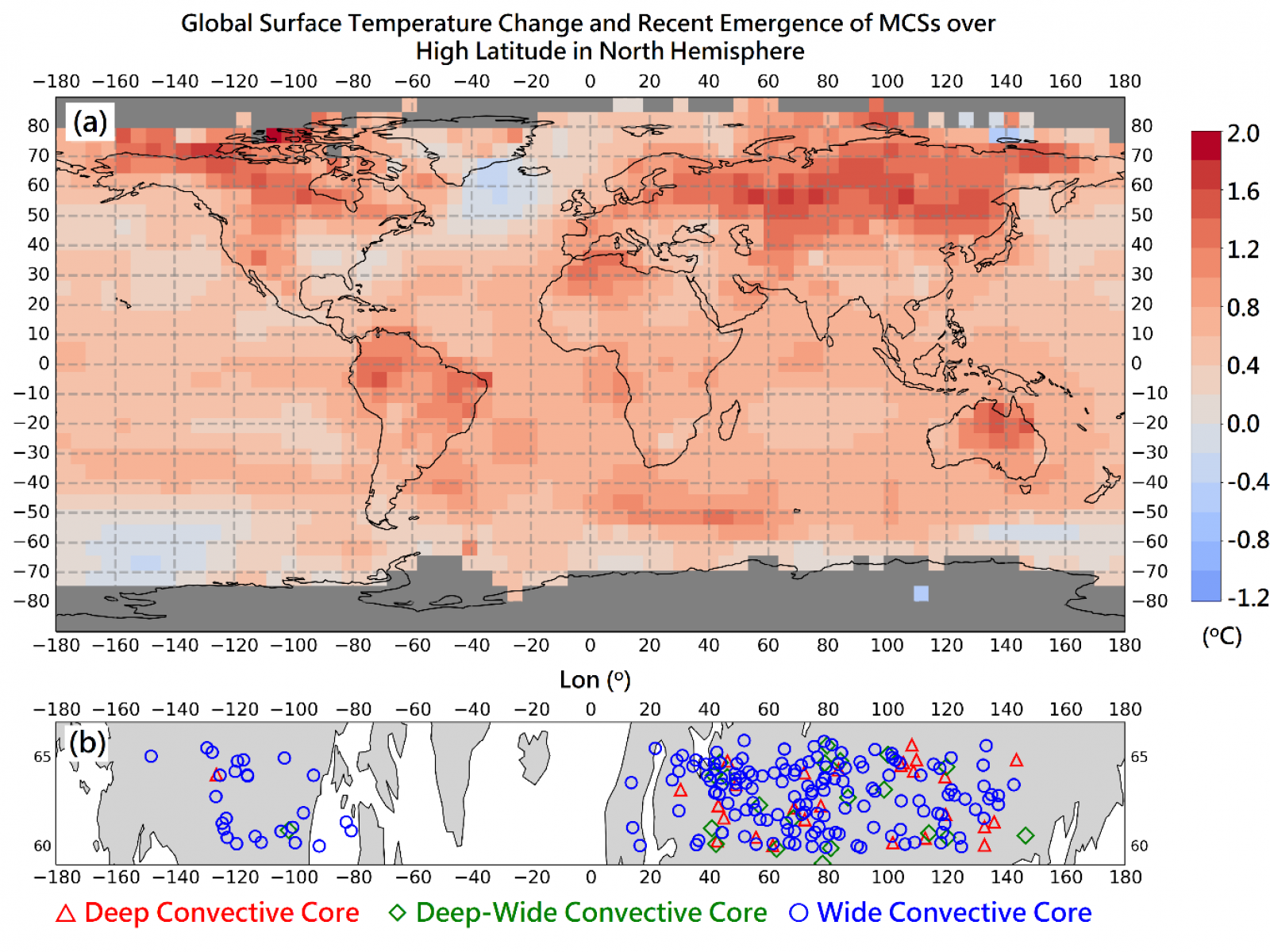Extreme Convective Storms Occur at High Latitudes
Analyzing global satellite data, researchers saw that these extreme storms occurred in areas with the largest surface warming on Earth

Researchers found that deep convective storms have been occurring surprisingly frequently in the high-latitude continents where the surface temperature increase has been greatest.
The Science
Deep convective storms—cumulonimbus clouds that produce heavy rain, hail, and wind—are well known as severe weather producers in the middle latitudes. Convective storms are especially powerful when they reach large horizontal and vertical dimensions. At high latitudes, there has been a dearth of information about such storms, either because they in the past they have occurred rarely or because they have gone unobserved in these remote latitudes until now. A radar system aboard the Global Precipitation Measurement (GPM) core satellite, launched in 2014, has made it possible to identify and measure the sizes of extremely heavily precipitating convective storms and to study where and when these storms occur at latitudes as high as 65 degrees. Researchers at the U.S. Department of Energy’s Pacific Northwest National Laboratory and the University of Washington have examined the storms seen by the GPM satellite and found that deep convective storms have been occurring surprisingly frequently at the high latitudes during the warm seasons (April‒September) of recent years (since 2014). Furthermore, the satellite data show that they occur almost exclusively over high-latitude continents where the surface temperature increase has been greatest in the past decades.
The Impact
This study has established the global pattern of the occurrence of extreme convective storms at high latitudes. The correlation between the extreme convective storms and the largest surface warming of the globe suggests that high-latitude continental regions, such as Siberia, northern Europe, and northern Canada, could experience more frequent extreme convective storms in a continually warming world.
Summary
The GPM core satellite, which features a space-borne Dual-frequency Precipitation Radar (DPR) providing near-global coverage (65°S to 65°N), made it possible to establish the global occurrence of convective storms at high latitudes. Previous work observed extreme convective storms at a particular high-latitude location, but the occurrence frequency and the global picture over all high-latitude regions were unknown. Researchers analyzed the three-dimensional radar echoes seen by the GPM over a 5-year period (2014–2018) and showed that extremely intense deep convective storms often occur during the warm season (April–September) over high-latitude continental regions where the surface temperature increase has been greatest. The associated thermodynamical environments suggest that high-latitude convection could be more common in a continually warming world, meaning more weather extremes. More and longer time measurements are needed for storms in high latitudes to understand the environments in which these storms occur and further quantify the relationship of surface warming and extreme convective storms at those latitudes.
Funding
J. Fan, Z. Feng, and J. Wang were supported by the Climate Model Development and Validation (CMDV) program of the U.S. Department of Energy's (DOE’s) Climate and Environmental Sciences Division. R. Houze and S. Brodzik were supported by the Pacific Northwest National Laboratory (PNNL) subcontracts MA243766-TO358850 (CMDV) and MA243766-TO292896 (Water Cycle and Climate Extremes). This research used resources of the National Energy Research Scientific Computing Center (NERSC), a DOE Office of Science User Facility operated under Contract No. DE-AC02-05CH11231. PNNL is operated for DOE by Battelle Memorial Institute under contract DE‐AC05‐76RL01830.
Contact
Published: July 20, 2020
Houze RA, Jr., J Wang, J Fan, S Brodzik, and Z Feng. 2019. “Extreme Convective Storms Over High-Latitude Continental Areas Where Maximum Warming Is Occurring.” Geophysical Research Letters 46(7):4059–4065, https://doi.org/10.1029/2019GL082414